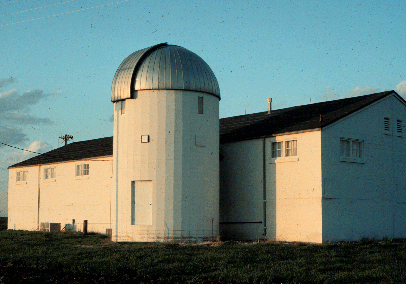
UNL's Behlen Observatory near Mead will be open to the public from 7:30 to 10 p.m. on Sept. 30. Admission is free.
Provided the sky is clear, visitors will be able to view a variety of objects with the observatory's 30-inch telescope and with smaller telescopes set up outside the observatory. These include the moon, the planets Jupiter and Uranus, two kinds of star clusters, double or multiple stars, and the Ring Nebula in Lyra.
At 8 p.m. a member of the observatory staff will give a talk about objects that are visible in the evening sky.
At this time of year it is possible to see both open clusters and globular clusters with the 30-inch telescope. An open cluster is a clump of several hundred or several thousand relatively young stars. Most are no more than a few hundreds of millions of years old. On the other hand, globular clusters contain hundreds of thousands of extremely old stars. Through the telescope, the two types of clusters look quite different. Open clusters have no definite shape and the stars appear relatively bright. In contrast, globular clusters are quite round and their stars are so faint and numerous that they blend together into a continuous glow.
The observatory will also be open to the public from 7:30 to 10 p.m. on Nov. 4 and Dec. 2.
For more information, go to http://astro.unl.edu/observatory or by calling UNL astronomy professor Edward Schmidt at 402-472-2788.
Directions to the observatory and maps are available at the website.
More details at: http://go.unl.edu/0wo